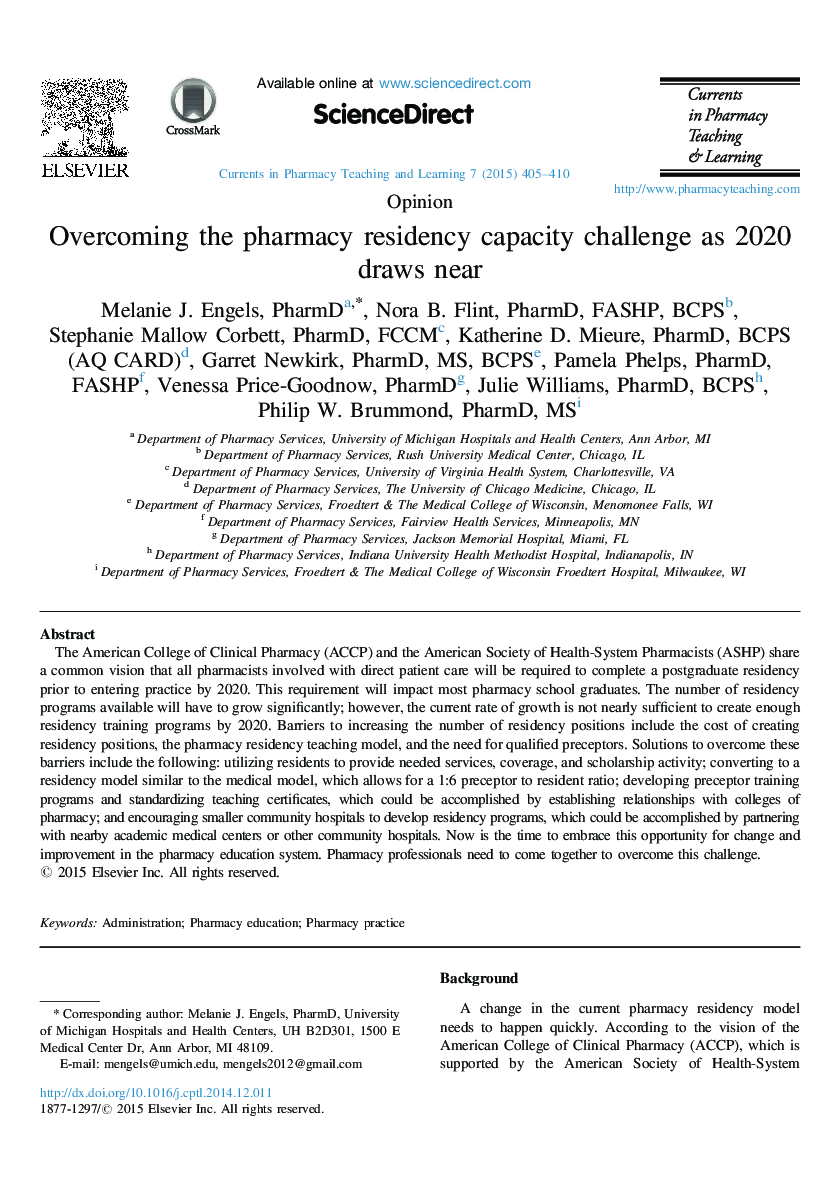| Article ID | Journal | Published Year | Pages | File Type |
|---|---|---|---|---|
| 353090 | Currents in Pharmacy Teaching and Learning | 2015 | 6 Pages |
The American College of Clinical Pharmacy (ACCP) and the American Society of Health-System Pharmacists (ASHP) share a common vision that all pharmacists involved with direct patient care will be required to complete a postgraduate residency prior to entering practice by 2020. This requirement will impact most pharmacy school graduates. The number of residency programs available will have to grow significantly; however, the current rate of growth is not nearly sufficient to create enough residency training programs by 2020. Barriers to increasing the number of residency positions include the cost of creating residency positions, the pharmacy residency teaching model, and the need for qualified preceptors. Solutions to overcome these barriers include the following: utilizing residents to provide needed services, coverage, and scholarship activity; converting to a residency model similar to the medical model, which allows for a 1:6 preceptor to resident ratio; developing preceptor training programs and standardizing teaching certificates, which could be accomplished by establishing relationships with colleges of pharmacy; and encouraging smaller community hospitals to develop residency programs, which could be accomplished by partnering with nearby academic medical centers or other community hospitals. Now is the time to embrace this opportunity for change and improvement in the pharmacy education system. Pharmacy professionals need to come together to overcome this challenge.
